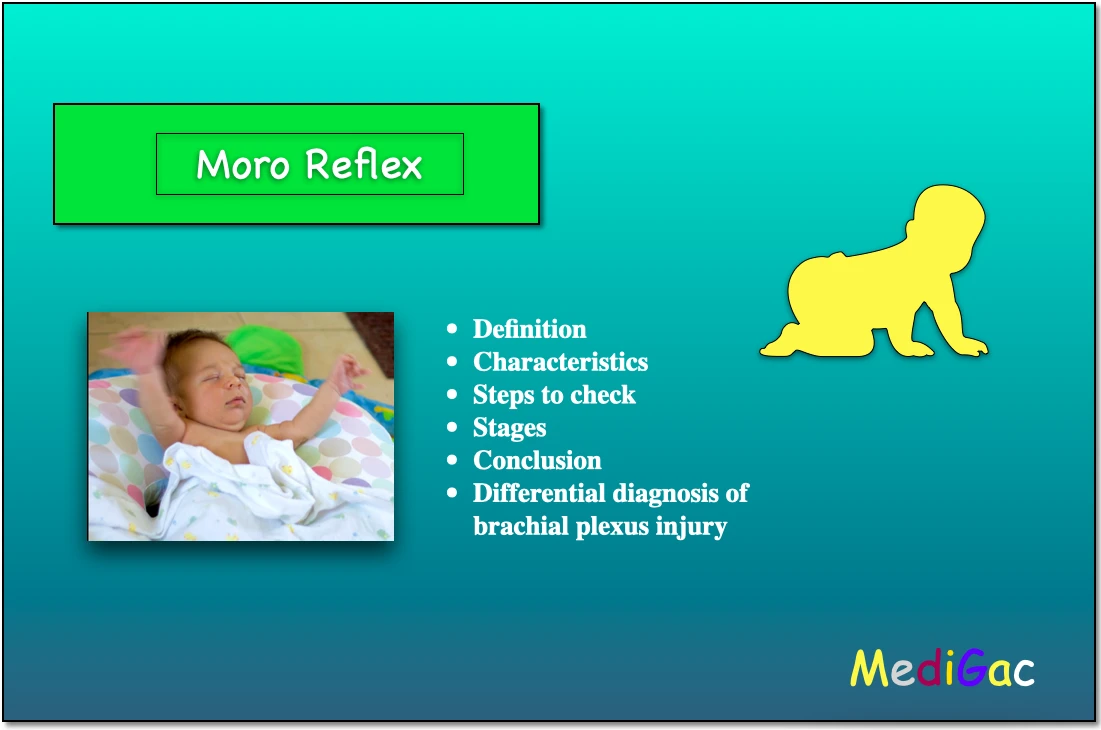
Moro reflex in new born babies, infants and neonates. Definition,Characteristics,Steps to check,Stages,Conclusion,Differential diagnosis of brachial plexus injury. So in this post, we are going to discuss about the Moro reflex. We have discussed Six topics :
- Definition
- Characteristics
- Steps to check
- Stages
- Conclusion
- Differential diagnosis of brachial plexus injury
Definition :
The Moro reflex, also known as the startle reflex, is an involuntary motor reaction that develops in newborns shortly after birth. The infant may splay their arms and move their legs before putting their arms in front of their body in a Moro reflex.
Characteristics :
- As a response to a rapid cessation of support, this reflex is present up to 4-5 months of age.
- The baby feels as if he or she is falling.
- This reflex will be checked by the doctor after birth and at well-child checkups.
- The motor reflex assesses the central nervous system’s integration.
- A moro reflex in an infant indicates that the child does not have a real brachial plexus damage.
Steps to check :
- The head is gently elevated with sufficient support to begin moving the infant’s body weight away from the examination table.
- The newborn’s support was abruptly released, enabling the infant to slide backwards for a brief second before being instantly supported again.
- The infant’s usual reaction is a shocked expression.
- As the reflex wears off, the baby pulls his arms down to his body and rests.
Stages :
- At first the baby spreads out the arms that is abduction.
- Then starts to unspread the arms that is adduction.
- And at the last the baby starts to cry.
Conclusion :
- In babies, the absence of the moro reflex is abnormal.
- If the reflex is absent or atypical, the child’s muscles may need to be examined.
- Shoulder X-rays or tests for problems associated with a brachial plexus injury are examples of these tests.
- The absence of both sides indicates that the brain or spinal cord has been damaged.
- Absence on only one side could indicate a shattered shoulder bone or a brachial plexus damage.
- Infants born vaginally with forceps may not move correctly and have a brachial plexus damage, which affects the upper extremities.
- The infant may cry if the shoulder is palpated.
- A clavicle fracture may be seen in the infant.
Differential diagnosis of brachial plexus injury :
- Clavicle fracture with pseudoparalysis
- Proximal humerus epiphyseal separation
- Posterior shoulder dislocation